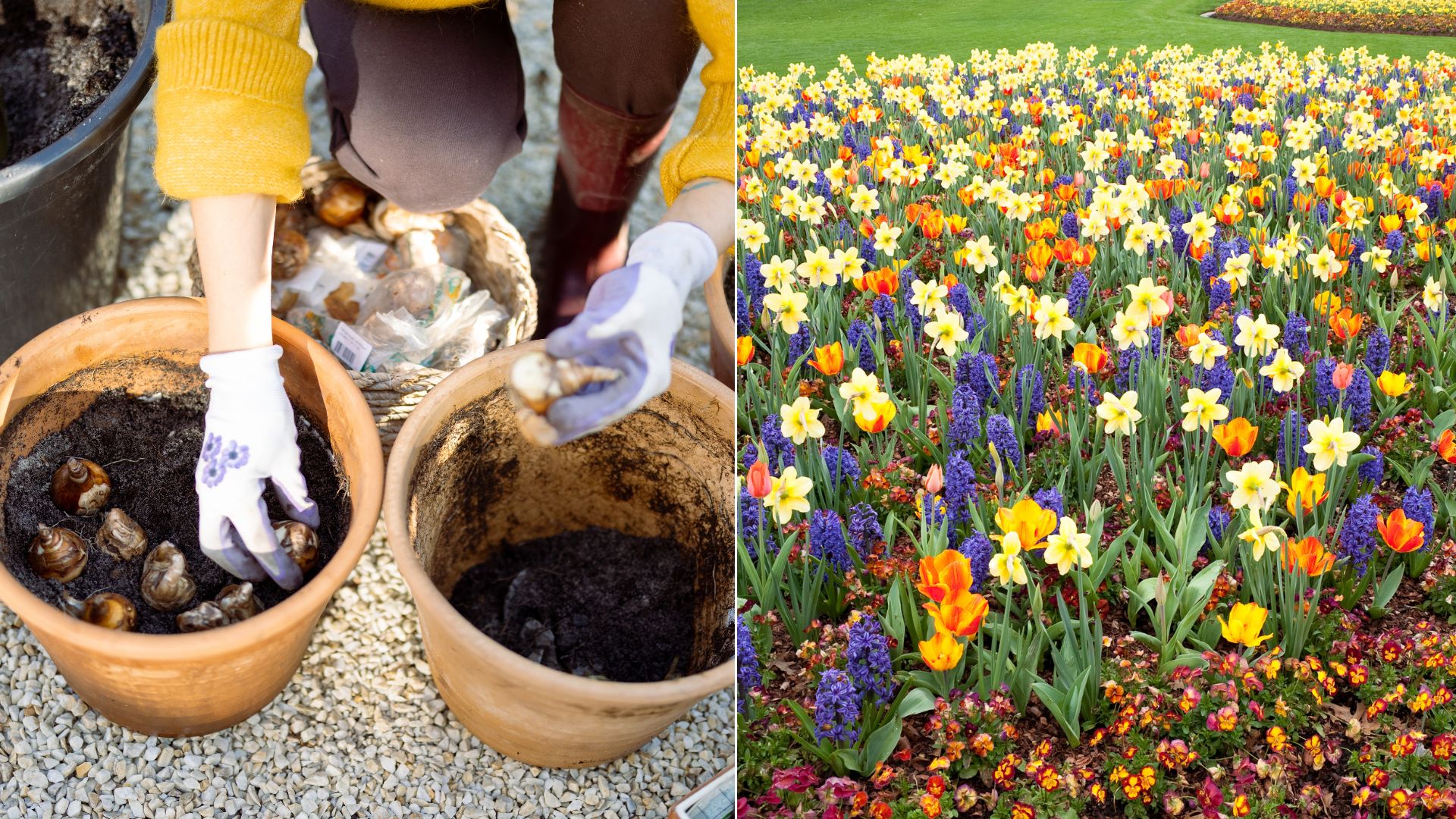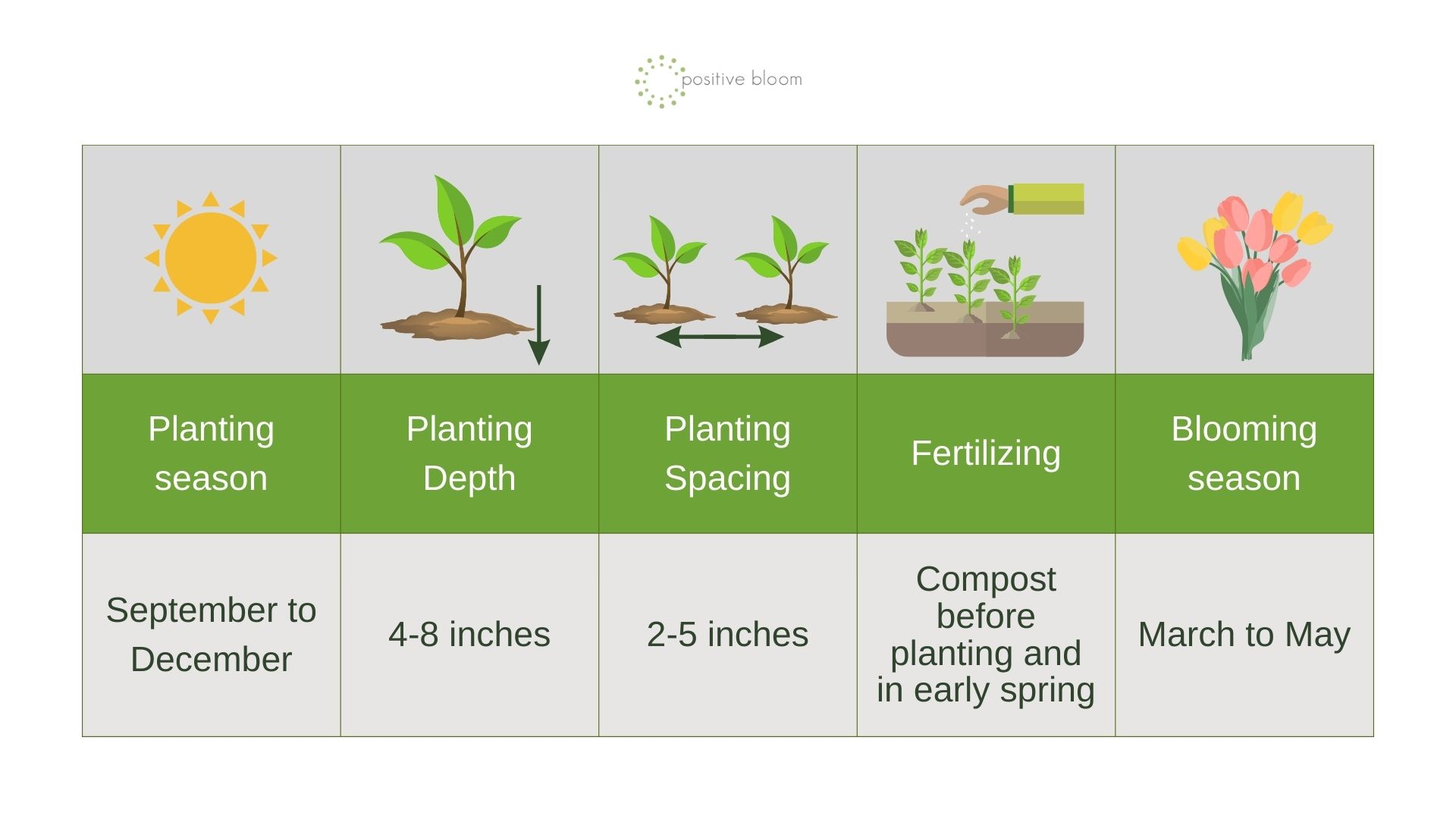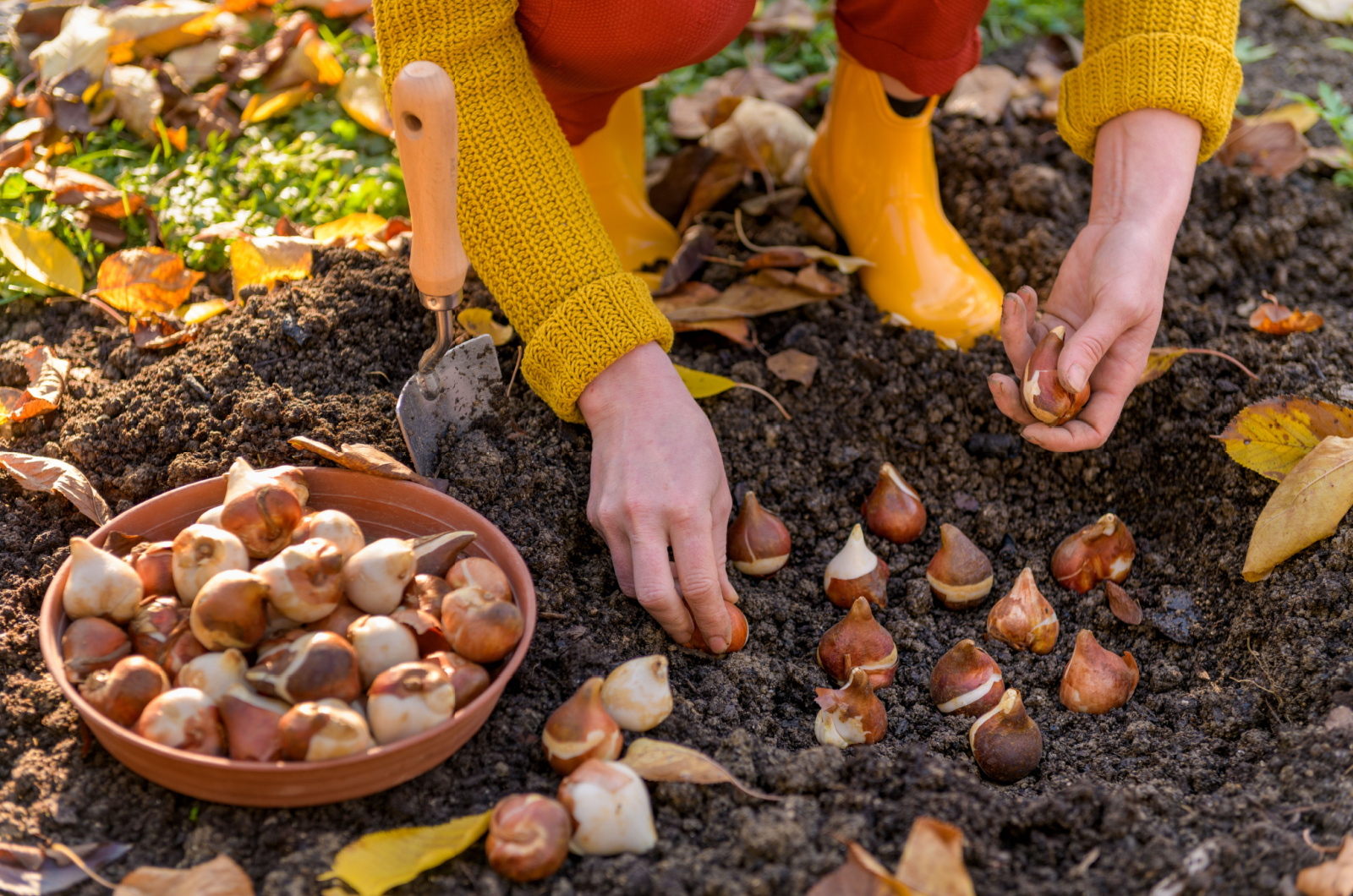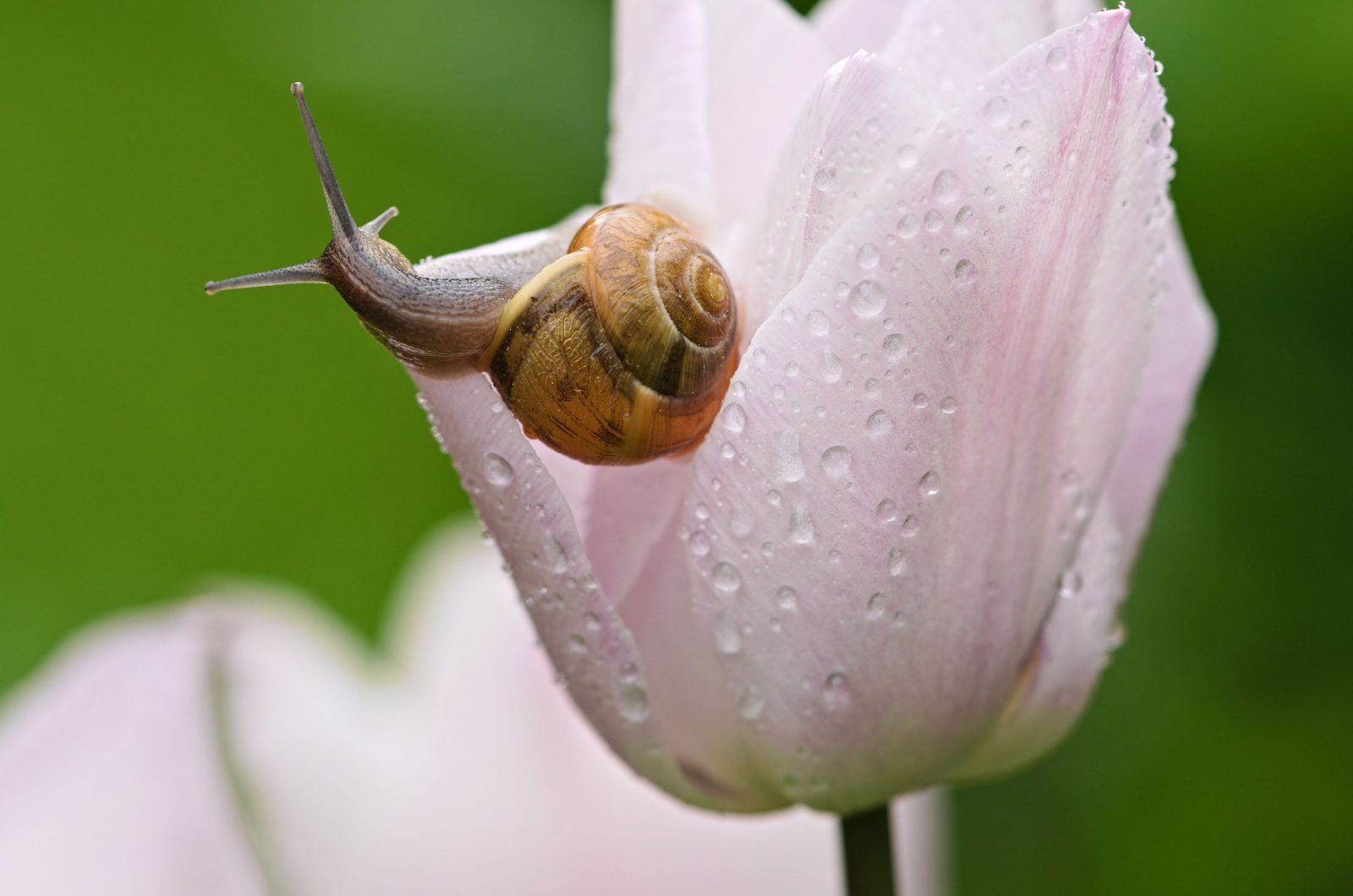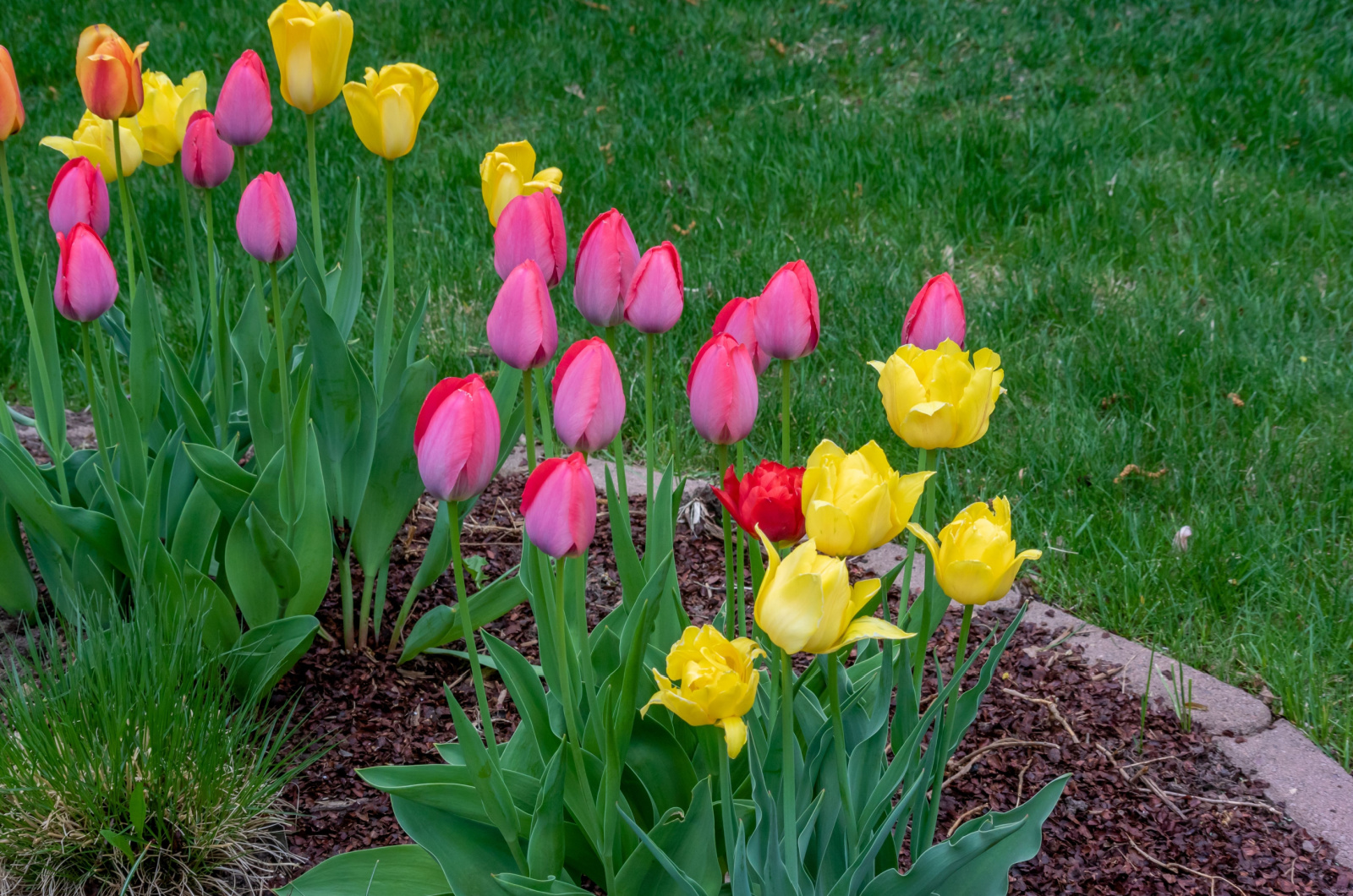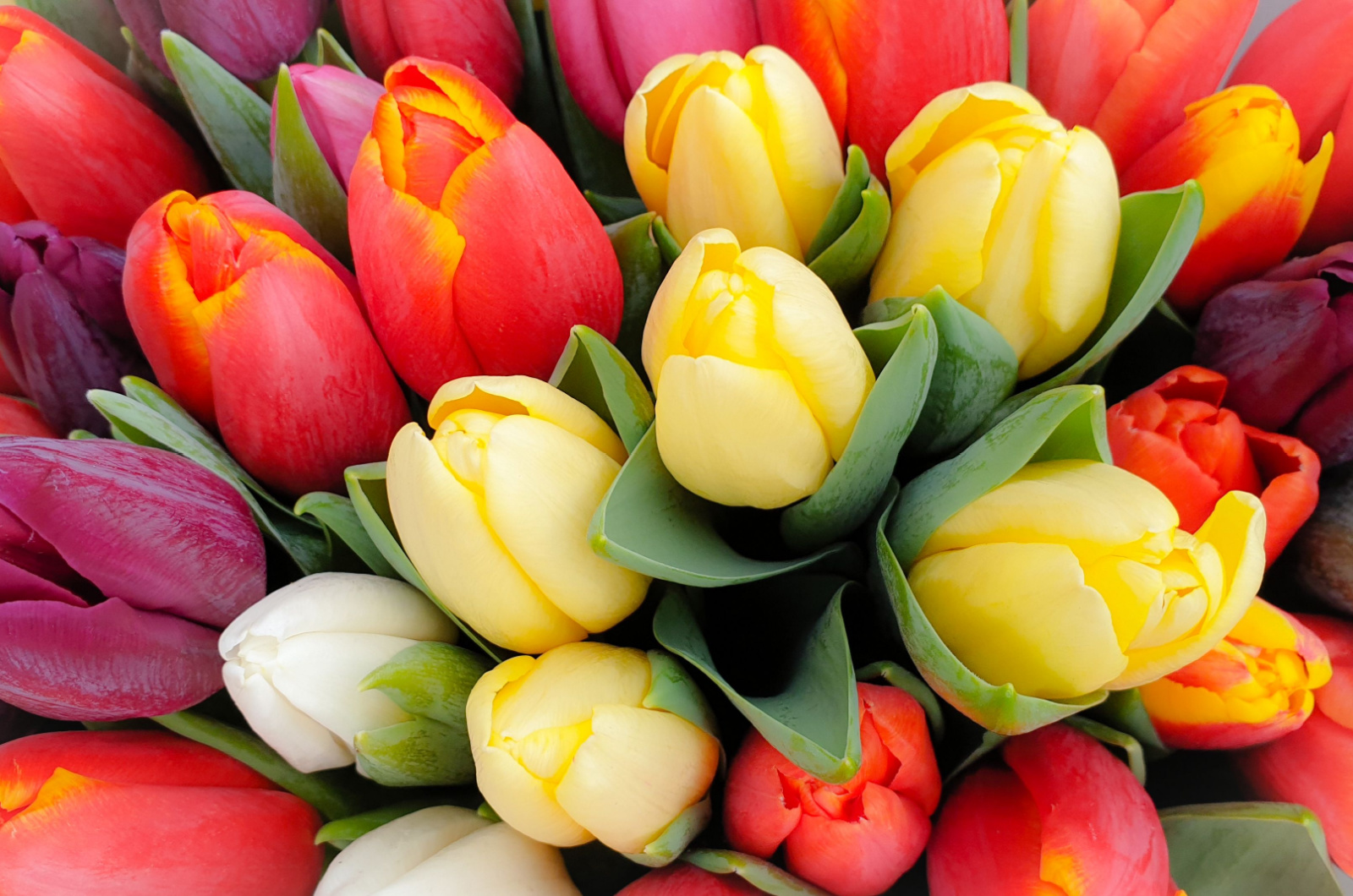One of every gardeners’ favorite flowers is definitely tulips. These colorful spring bulbs sprout early and can adorn your garden with color before other plants start waking up.
And the best part about them is that they aren’t that difficult to grow. You just have to plant them at the right time, and they (and your yard) will flourish.
Here are some tips that can help you out with that as well as with tulip maintenance.
Let’s get started!
When To Plant Tulip Bulbs
Tulips are on the list of the best spring bulbs to plant in fall, and you should plant them some time during this season, but after the soil has had time to cool after the summer heat.
Many gardeners wait until nighttime temperatures are around 40°F consistently for two weeks, which makes the planting month different in different zones.
Plant your tulips in September in zones 3-5, in October in zones 6 and 7, and in November or even December in zone 8 or possibly zone 9.
P.S. You don’t have to say goodbye to tulips just because you live in warm climates. You can get pre-chilled bulbs and grow them as annuals.
How To Plant Them
If you want your tulips to look their best, plant them in clumps of about 10 bulbs. Here are some tips that can help you out:
Step 1. Choose a spot with full sun, nutrient-rich and well-draining soil, and a pH level between 6.0-7.0.
Step 2. If your substrate isn’t that fertile or you want to give your tulips an additional boost, you can amend it with some organic matter or a well-balanced slow-release fertilizer.
Step 3. Dig holes three times deeper than the size of a single bulb, around 4-8 inches deep.
Step 4. Plant your bulbs 2-5 inches apart, depending on their size, and make sure that the pointy end is facing upwards.
Step 5. Cover them with growing medium, water them deeply, and continue irrigating them once a week for the first month if you don’t live in a rainy region. Leave the bulbs in the ground until spring. You don’t want to overwater your bulbs, give them root rot, and destroy your yield.
Step 6. Fertilize your bulbs in early spring if there’s any need, and start watering them again once you see they have put on some leaves.
* If you’re growing your tulips as annuals, you can uproot the bulbs and discard them after they finish flowering.
Where To Plant Tulip Bulbs
You can grow your tulips hydroponically or plant them in the garden, just make sure they get at least 6-8 hours of direct sunlight each day.
Grow them as border plants, add them to your perennial beds, use them in a rock garden, or plant them below trees and shrubs if you have varieties that love afternoon shade.
Quick Care Tips
These plants grow best in climates with cold winters, warm summers, and moist conditions. Here are some of their basic requirements:
• Light: Tulips require full sun, or rather at least 6-8 hours of direct light per day.
• Water: Irrigate them once per week for the first month after planting and then cease watering until spring when you can start irrigating them again after leaves appear.
• Climate: Tulips are hardy in zones 3-8 and require cold treatment of at least 10-14 weeks to flower. If you live in warmer climates, put the bulbs in a paper bag and keep them in a fridge. As far as humidity goes, tulips thrive when it is between 65-85%.
• Soil: Plant your tulips in a well-drained soil, such as a mixture of sand and organic compost, and ensure the pH level is between 6.0-7.0.
• Fertilizer: These plants do not require much fertilizer, but you can apply compost, well-balanced slow-release plant food, or even bone meal when planting. And if you need to fertilize again, do so in early spring.
Pest Control
Wildlife such as squirrels, chipmunks, voles, and moles see your tulip bulbs as food, so you should protect them somehow.
One way is to fence them with chicken wire or grow plants that repel these rodents, such as alliums.
Or you can always plant some extra bulbs so that both you and unexpected visitors to your garden can enjoy them.
Early-Season Tulip
There are four main varieties of early-blooming tulips with numerous cultivars to choose from.
• Single early: These tulips usually get between 10-18 inches tall, have a single cup with six petals, and come in an array of colors, from snow white to deep purple.
• Double early: The bowl-shaped flower resembles peonies with their double petal rows, and they usually reach a compact height of only 8-12 inches.
• Fosteriana: These wild species have a thin bowl-shaped cup and reach up to 10-20 inches.
• Kaufmanniana: Also known as water lily tulips, kaufmanniana tulips have cups that truly resemble water lilies with their spiky petals and only reach the height of 6-12 inches.
Mid-Season Tulips
There’s a different tulip color meaning you can convey, so why not choose some mid-season bloomers to do just that?
• Darwin hybrid: These mid-to-late-season bloomers can rise up to 20-28 inches tall and look like tiny pyramids when young.
• Fringed: Another mid-to-late blooming tulip variety are fringed tulips, which get 14-30 inches tall and have ruffled flowers.
• Greigii: These tulips have a single row of pointed petals and slightly resemble flower tongues, reaching a height of only 8-12 inches and blooming in early-to-mid spring.
• Parrot: Blooming from mid-to-late spring, parrot tulips have ruffled, feathery cups and can get up to 22 inches tall.
• Triumph: These are the largest group of tulips. They bloom in mid-to-late spring, have single cup-shaped blossoms, and rise up to 10-16 inches in height.
Late-Season Tulips
• Single late: These are the true late-blooming tulips with a true goblet-shaped flower head and a height of 22-30 inches.
• Double late: Another tulip variety that resembles peonies, only this one blooms in late spring and gets up to 12-20 inches tall.
• Lily flowered: Star-shaped flowers of these tulips resemble lilies and the entire plant grows up to 16-24 inches tall.
• Viridiflora: The blossoms of these late bloomers can last for up to 3 weeks, adorning your garden with 16-20 inch tall plants that have flamy streaks of green on the bottom side of petals.
Do Tulip Bulbs Come Back?
Oh, that never-ending question: Are tulips perennials or do you have to replant them?
And to answer it, I’ll say yes, tulips are perennials and they will come back year after year once they naturalize in an area.
Some bulbs will produce bublets and allow your tulips to spread and continue their life, while others will fade away after some years have passed.
Kaufmannia, Fosteriana, and Greigii tulips are more likely to come back, so try planting those.
Can You Plant Tulips In Spring?
You shouldn’t plant tulips in spring because they will not have enough time to chill and produce flowers later on.
The latest you can put your tulip bulbs in the ground is January and only in cold climates where they can still get around 10 weeks of cold exposure.
Can Tulip Bulbs Multiply?
Yes, tulips can multiply on their own, but you should choose a variety which says “naturalizing” or “wildflower.”
These are more likely to produce bublets, and all you have to do is let them die back, leave them in the ground, and rake away dead plant material.
Can Tulip Bulbs Stay In The Ground All Year Long?
If you live in northern regions, you can leave your tulip bulbs in the ground all year long. That means, you can learn how to plant a bulb lawn and actually go with it, making your landscaping chores a lot easier.
But if you live in warm and southern climates, your best bet for growing tulips is sticking to annuals and digging them up once they finish flowering.

